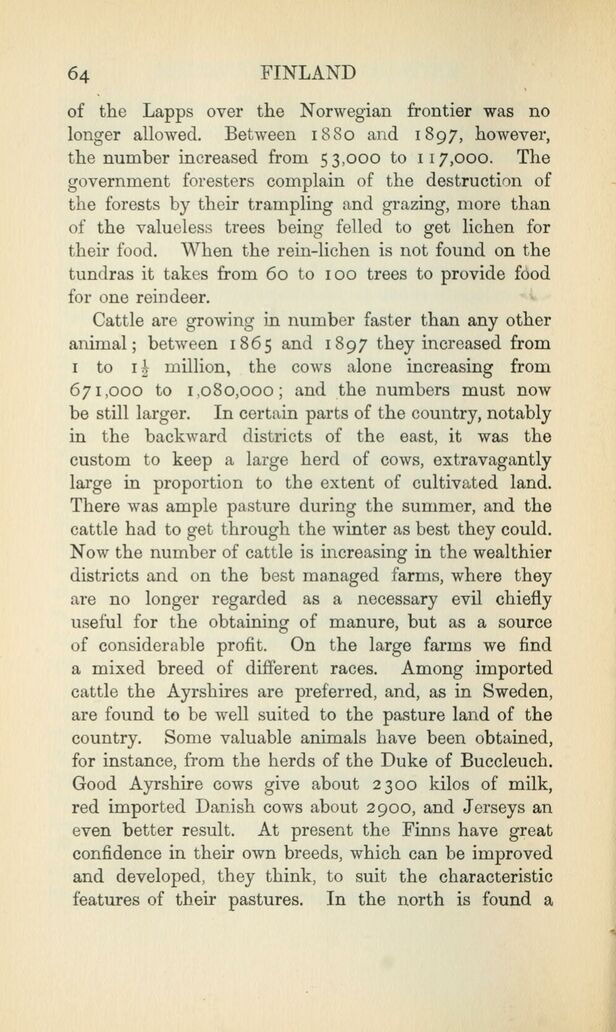
Full resolution (JPEG) - On this page / på denna sida - IV. Methods and Conditions of Agriculture

<< prev. page << föreg. sida << >> nästa sida >> next page >>
Below is the raw OCR text
from the above scanned image.
Do you see an error? Proofread the page now!
Här nedan syns maskintolkade texten från faksimilbilden ovan.
Ser du något fel? Korrekturläs sidan nu!
This page has been proofread at least once.
(diff)
(history)
Denna sida har korrekturlästs minst en gång.
(skillnad)
(historik)
of the Lapps over the Norwegian frontier was no
longer allowed. Between 1880 and 1897, however,
the number increased from 53,000 to 117,000. The
government foresters complain of the destruction of
the forests by their trampling and grazing, more than
of the valueless trees being felled to get lichen for
their food. When the rein-lichen is not found on the
tundras it takes from 60 to 100 trees to provide food
for one reindeer.
Cattle are growing in number faster than any other
animal; between 1865 and 1897 they increased from
1 to 1½ million, the cows alone increasing from
671,000 to 1,080,000; and the numbers must now
be still larger. In certain parts of the country, notably
in the backward districts of the east, it was the
custom to keep a large herd of cows, extravagantly
large in proportion to the extent of cultivated land.
There was ample pasture during the summer, and the
cattle had to get through the winter as best they could.
Now the number of cattle is increasing in the wealthier
districts and on the best managed farms, where they
are no longer regarded as a necessary evil chiefly
useful for the obtaining of manure, but as a source
of considerable profit. On the large farms we find
a mixed breed of different races. Among imported
cattle the Ayrshires are preferred, and, as in Sweden,
are found to be well suited to the pasture land of the
country. Some valuable animals have been obtained,
for instance, from the herds of the Duke of Buccleuch.
Good Ayrshire cows give about 2300 kilos of milk,
red imported Danish cows about 2900, and Jerseys an
even better result. At present the Finns have great
confidence in their own breeds, which can be improved
and developed, they think, to suit the characteristic
features of their pastures. In the north is found a
<< prev. page << föreg. sida << >> nästa sida >> next page >>